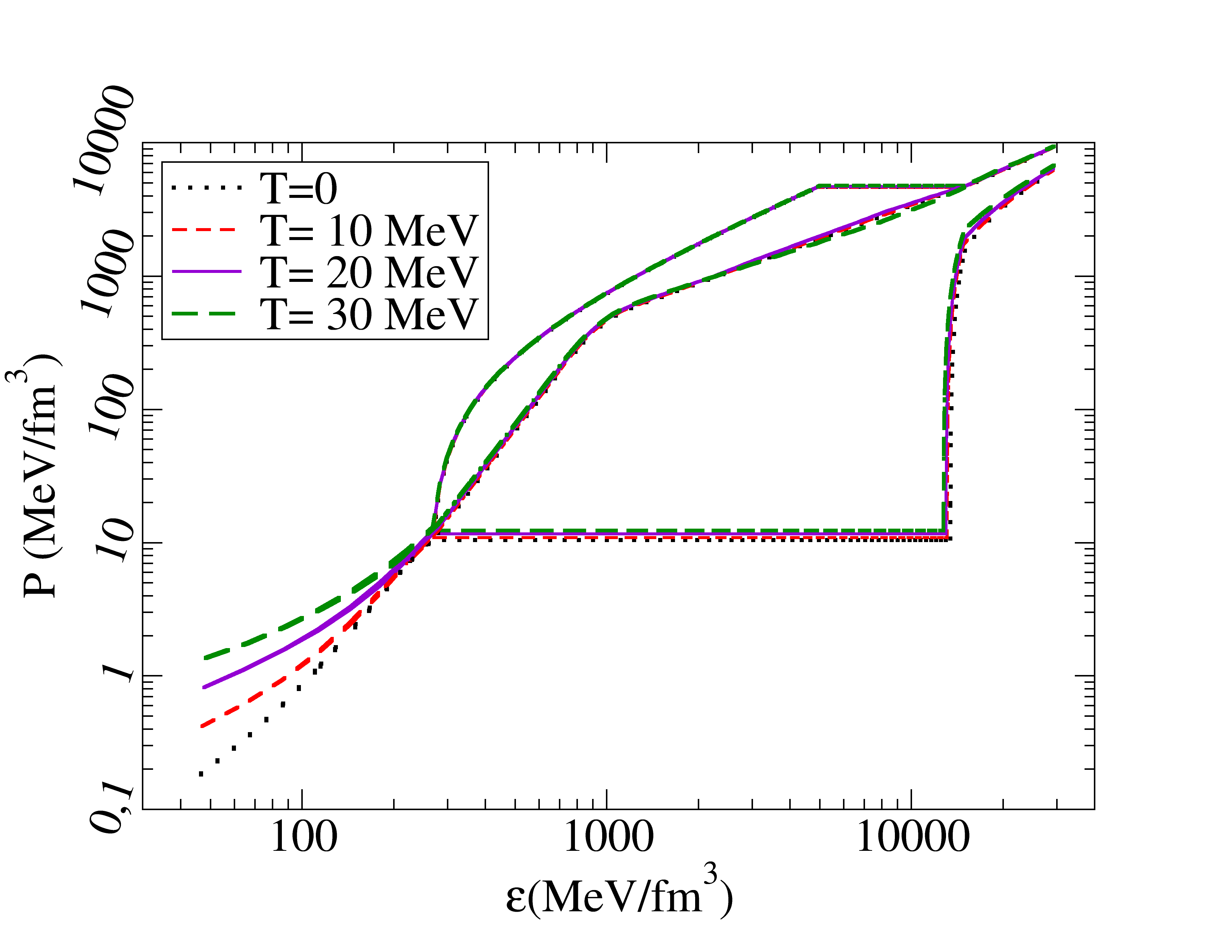

nEoS-T
Neutron star Eqn. of State at finite Temperature for modified gravity
You can find Equations of State for neutron stars
constrained by basic principles and generated with Hadron Physics
input alone
(low-density: Chiral Perturbation Theory for neutron matter;
high-density pQCD; intermediate density: monotonicity and causality).
In particular, no Astrophysics nor General
Relativity input has been used. Thus, our sets are less constrained
than others, but also less biased:
you may want to use them, for example, if you are thinking of testing
General Relativity or modified theories of gravity with neutron
stars.
For full systematic analysis at T=0 visit the main nEoS page ; this one is dedicated to the finite temperature extension
Citation: Eva Lope Oter and Felipe J. Llanes-Estrada arXiv:2108.04027 [hep-ph]
All files contain two columns of floating-point numbers (ε,P) in MeV/fm3
|
Lower end of the nEoS-T band (softest allowed EoS) |
Typical EoS through our grid |
Upper end of the nEoS-T band (stiffest allowed EoS) |
References to QCD-based low and high density EoS computations used here (from InspireHEP)
Sammarruca, Machleidt and Millerson (Chiral EFT NN potentials)
Kurkela and Vuorinen (pQCD)
We do not know of an investigation of the crustal (lowest-density) EoS whose systematic uncertainties are guaranteed so we have not incorporated it into our tables. But should it become strictly necessary to supplement them, a reasonable starting point would be the work of Sharma et al. published in Astron.Astrophys. 584 (2015) A103.
Acknowledgment of support
This project has received funding from the European Union’s Horizon 2020 research and innovation programme under grant agreement No 824093; spanish MICINN grants PID2019-108655GB-I00, -106080GB-C21 (Spain); COST action CA16214 (Multimessenger Physics and Astrophysics of Neutron Stars) and the U. Complutense de Madrid research group 910309 and IPARCOS.
The Univ. Complutense team thanks the members of the EU COST Action
PHAROS
(CA16214) and the IPARCOS institute for a
stimulating scientific environment
as well as David Fernandez Sanz
for
computer assistance.
 |
Felipe J. Llanes Estrada and Eva Lope-Oter hosted at the Departamento de Física Teórica, Univ. Complutense, Madrid |
 |